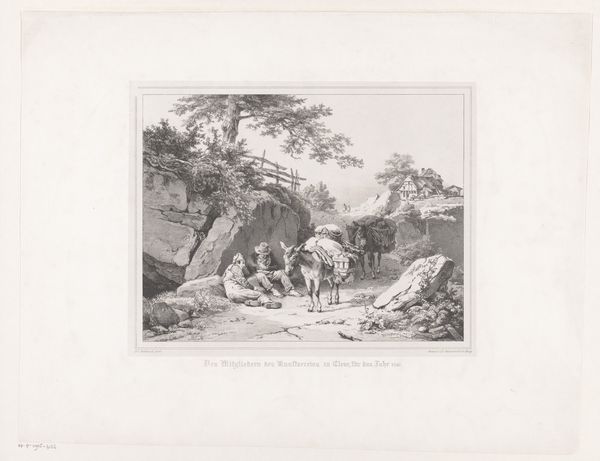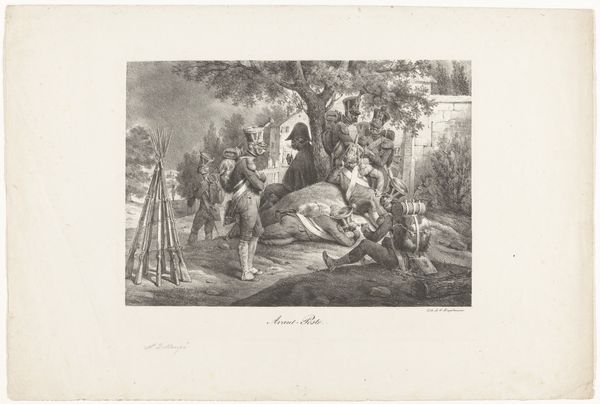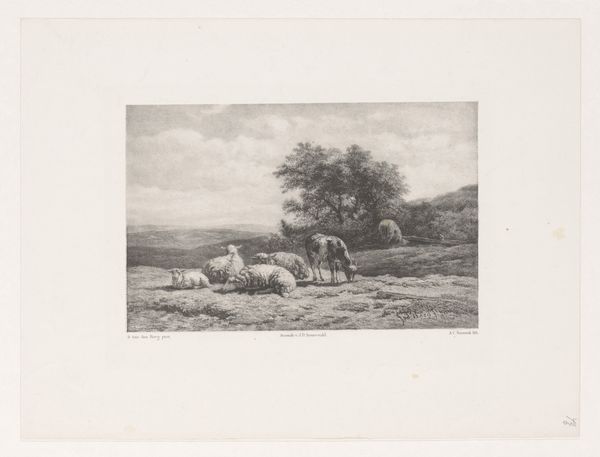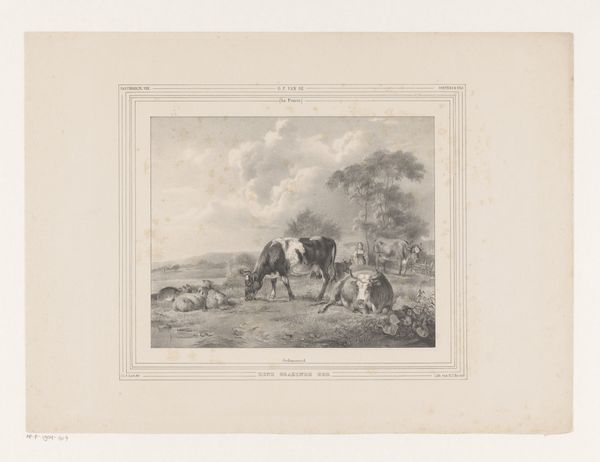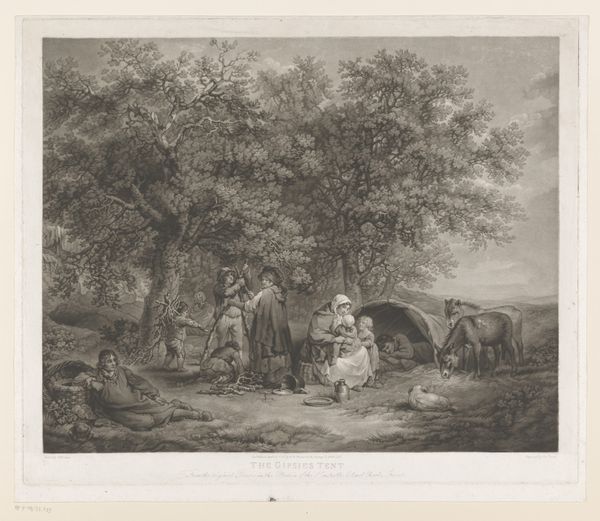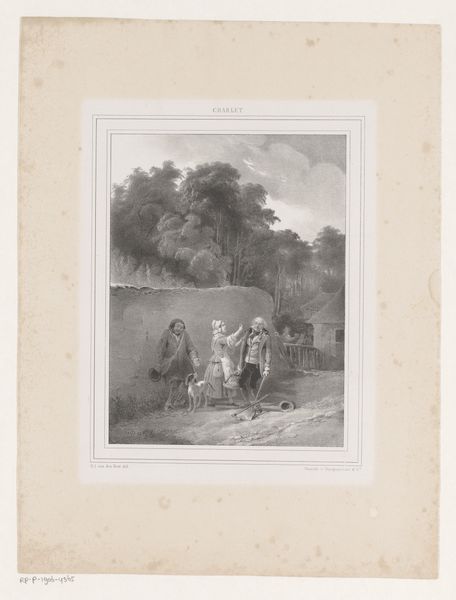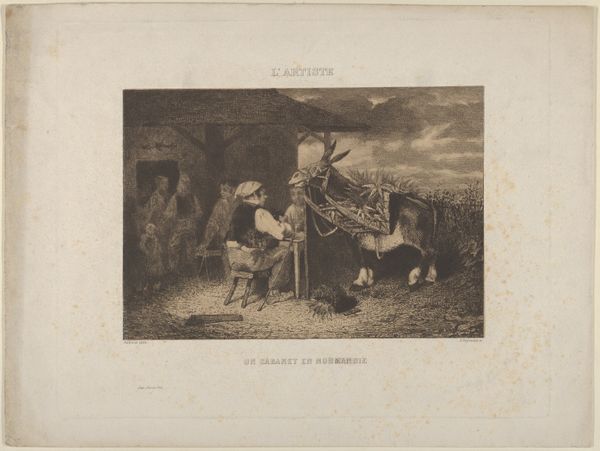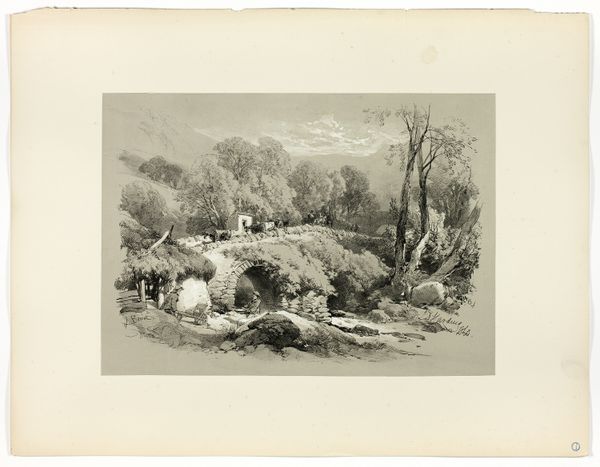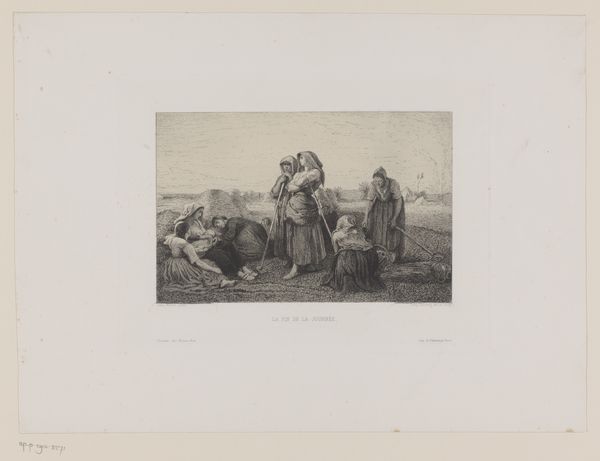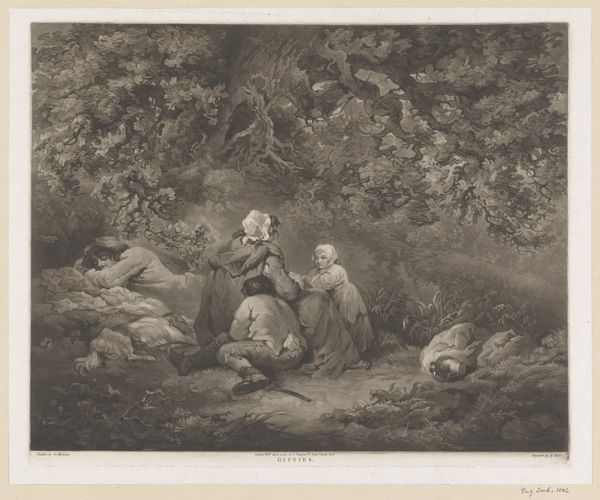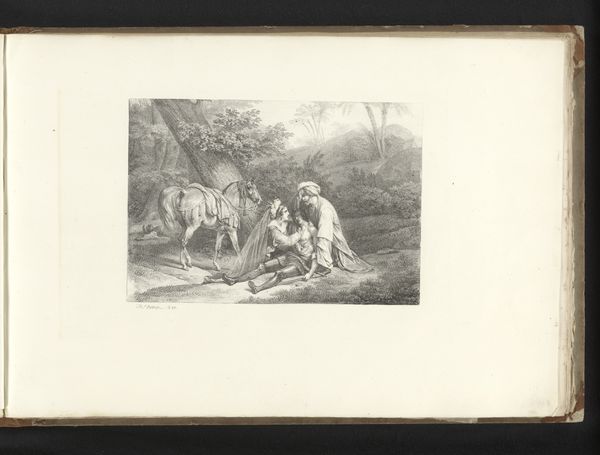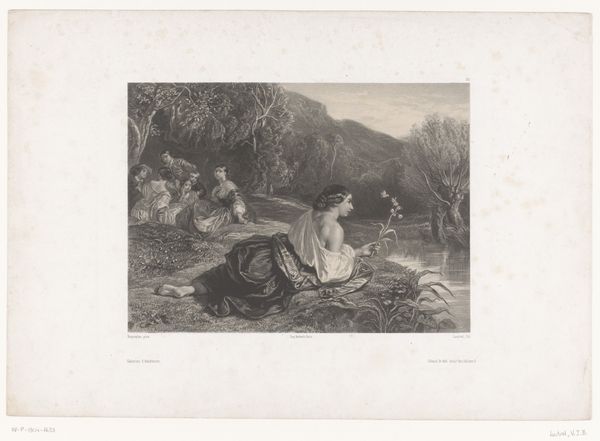
lithograph, print
#
lithograph
# print
#
landscape
#
realism
Dimensions: 285 mm (height) x 400 mm (width) (billedmaal)
Editor: We’re looking at “En Fåreflok,” a lithograph print by Adolph Kittendorff from the 1880s. It shows a woman tending to a flock of sheep. I'm struck by the pastoral tranquility; the sheep seem so peaceful and the scene feels very staged. What catches your eye in this piece? Curator: The image speaks volumes about the Romanticized view of rural life that gained popularity during the late 19th century, particularly within bourgeois circles. Think about the social implications of depicting such a scene. Who was the target audience for this lithograph, and what kind of message was it intended to convey about nature, labor, and national identity? Consider, too, how realism intersects with idealized sentimentality. Is it truly capturing the reality of agricultural life or projecting an aspirational image? Editor: So, it’s not just about pretty sheep, but about who wanted to see them and why? The art market then really shaped the content. Curator: Exactly. The art market definitely played a crucial role in promoting certain images over others. Patrons, critics, and institutions actively shaped public taste and disseminated particular ideologies through artwork. Kittendorff was tapping into a pre-existing desire to see and believe in a harmonious rural idyll. What happens when we consider the impact of industrialization? How do images of idyllic farmland contrast with growing urbanism during the 1880s? Editor: I see. The city is getting bigger, dirtier, so people want art showing an escape to nature. It makes me think about how even today, our view of ‘nature’ is influenced by art and media, not always by reality. Curator: Precisely. These idealized images perpetuate cultural expectations about landscape, ownership, and even class structures. Examining these underlying forces enriches our understanding of even seemingly simple depictions. Editor: Thinking about how the art market shapes what we see changes the way I look at these older landscape pieces. Curator: Absolutely. Historical awareness empowers you to deconstruct the artwork, question its intentions, and understand its broader significance within the cultural landscape.
Comments
No comments
Be the first to comment and join the conversation on the ultimate creative platform.
